How to deal with legacy systems and where to put the data
The situation is all too familiar: IT systems grow and thrive, and users become hunters and gatherers of data. Sooner or later, you inevitably must...

With the delivery of HCM for SAP S/4HANA in October 2022, the last module of the ERP family has moved into the SAP S/4HANA architecture for ERP. Lutz Friedrich, Head of HCM at Natuvion, provides an overview of the possibilities and opportunities that the changeover brings. He also describes the approaches Natuvion is using to integrate HCM into the new environment and presents a specific customer scenario.
The availability of SAP HCM for S/4HANA is generally associated with a maintenance commitment for the so-called core topics until 2040. This applies in particular to the urgently needed legal changes in payroll accounting and the constantly growing employer tasks in communication with statutory organizations. As such, the further digitalization of these processes is assured. Customers can continue to support their business processes in an on-premise architecture. The following graphic shows the basic SAP software solutions and their availability, with explanations of terms to follow.

However, SAP HCM would not be HCM if there were not also various options for the future orientation of the architecture in connection with SAP S/4HANA, both in terms of
The following diagram illustrates the basic situation and possible paths to transformation to HCM for SAP S/4HANA. In this model, the horizontal arrows always represent the SAP S/4HANA transformation, while the vertical arrows change the system architecture for SAP HCM.

We will start by looking at the horizontal arrows, representing the transformation. SAP's standard procedure is known as conversion. This involves transferring all settings, data and developments (if S/4HANA-compatible) to the new environment. Essentially, this involves upgrading to SAP S/4HANA 2022 and then activating the SAP S/4HANA version of SAP HCM via a business function. This process works very well, but leaves everything as it was.
However, many SAP HCM installations have a long history. This can be seen in the databases (both in terms of the amount of employee data and the number of companies mapped), the customization variants and also developments. In this respect, there are further opportunities in addition to the one-to-one conversion, which is known as the brownfield conversion. The associated opportunities include the restandardization and redesign of the application as well as a reduction in existing data volumes. These may comprise inactive companies or account assignments that are no longer valid. Leveraging these opportunities, as well as the combination of application and data, is possible with approaches such as a completely new implementation, known as greenfield, and a partial reorganization called the Selective Data Transition (SDT).
Particularly with regard to current, usually complex, billing and/or time management scenarios with a high level of decentralization, a complete reimplementation is very time-consuming and cost-intensive. It is probably only an option if the operating mode changes or the focus is on restandardizing the application for the new operating mode. The selective data transition approach, on the other hand, offers a good alternative to greenfield as well as the brownfield one-to-one conversion. The following diagram summarizes the three methods and focuses on the selective data transition.
SAP sees all three methods as possible paths to S/4HANA transformation. For the Selective Data Transition (SDT), there is a separate SAP community consisting of four companies worldwide which support this process with suitable processes and tools. Natuvion is part of this community, and the supporting tool is the Natuvion Data Conversion Server (DCS), a comprehensive tool for all types of system and data transformation. The content provided by the Natuvion DCS already includes the processing of HCM data as a template in the form of a master project. Of course, there will also be a requirement for migration in the event of a new implementation. Natuvion DCS has been developed to handle this too.
The SAP S/4HANA transformation using the SDT approach and Natuvion accelerators is shown in the following graphic.
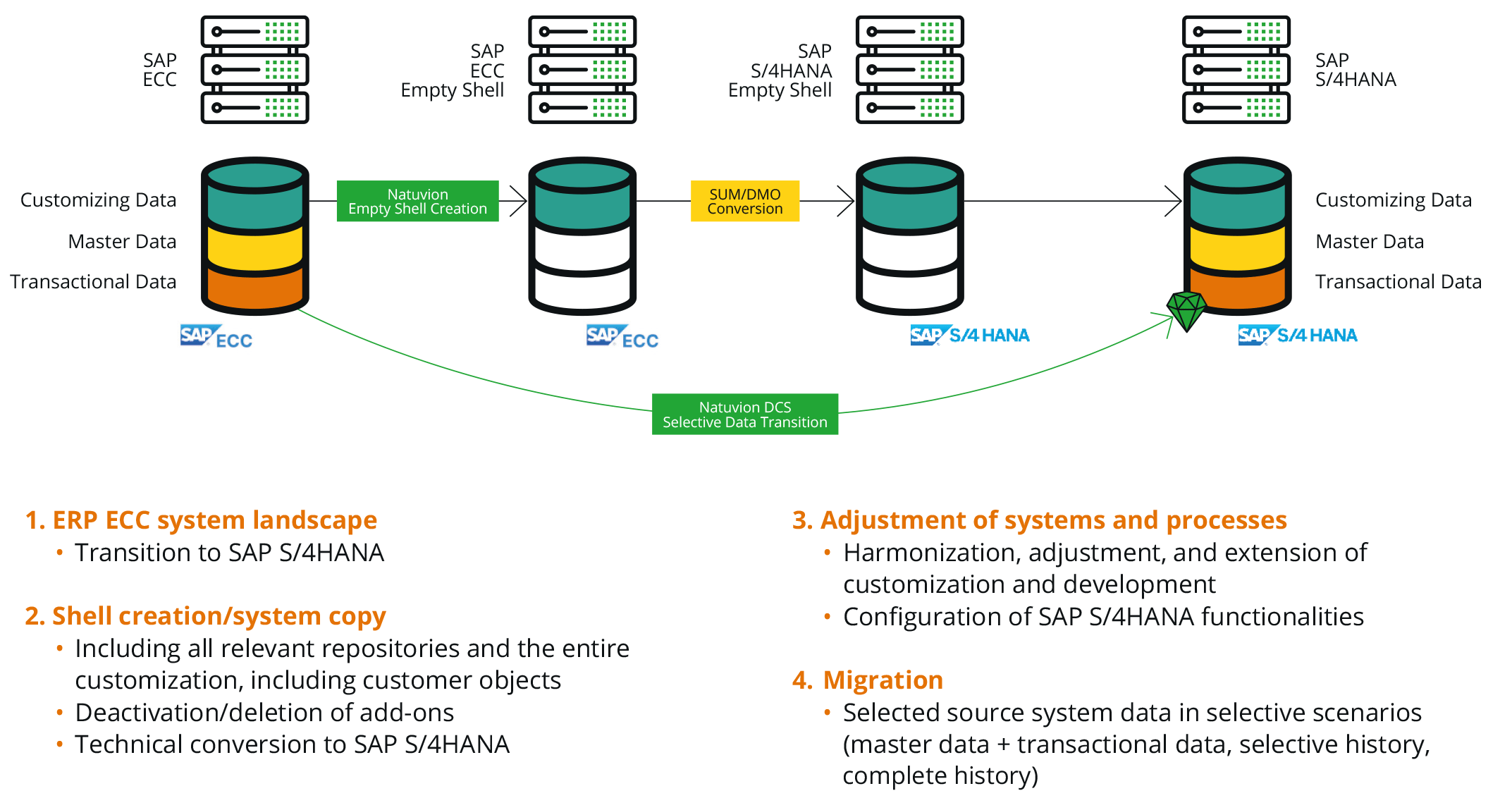
Natuvion has already used the process described very successfully in more than 100 projects, demonstrating that it is also a proven approach for HCM transformation.
To return to the original question of the possible paths, we will now take a look at the vertical arrows in the figure "Transformation paths to your HCM for S/4HANA". This is about separating HCM processes and HCM data from an integrated SAP system, which can consist of ERP data (finance, logistics), industry-specific solutions and HCM functions. This is often referred to as a carve-out. Here, too, there are different variants.
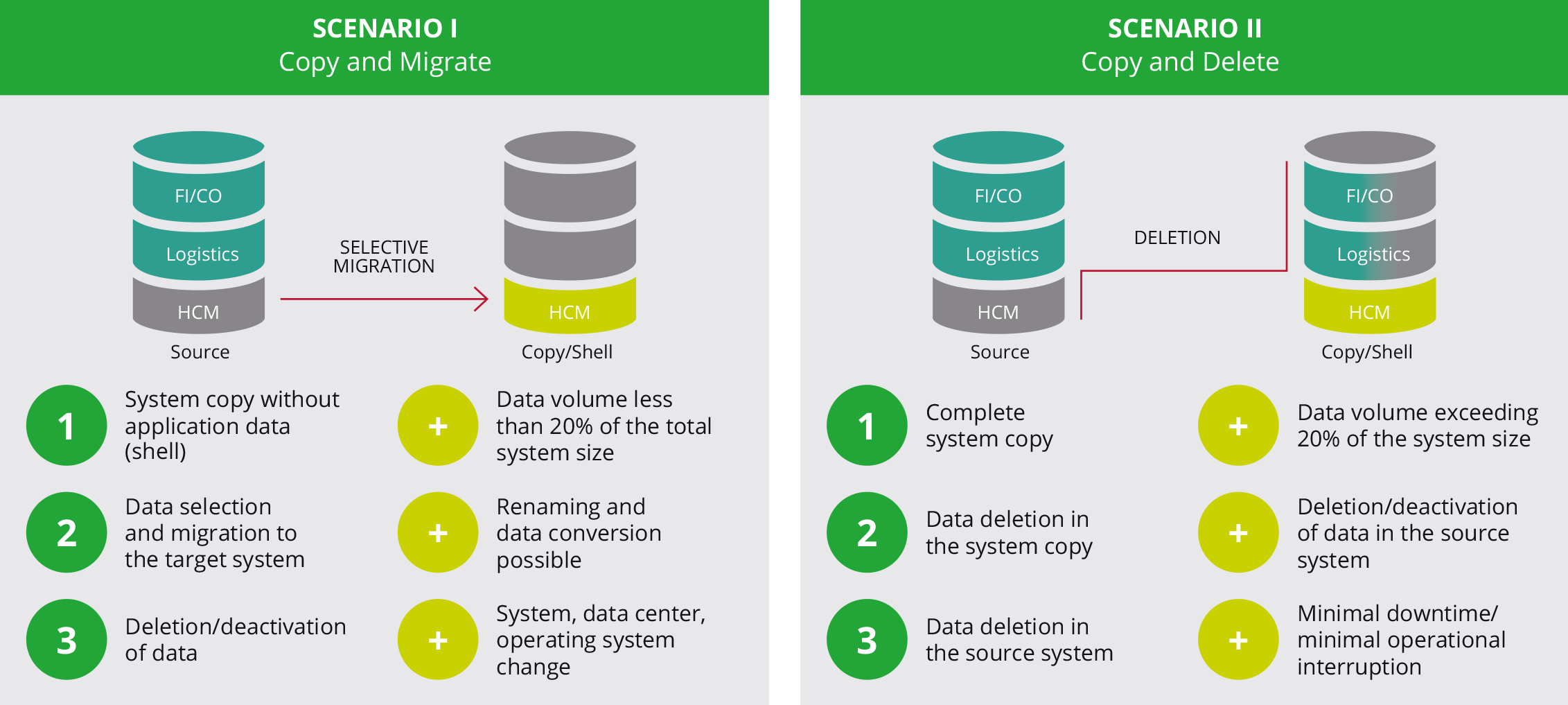
The drivers for a carve-out of HCM functions can arise for various reasons, such as
Data also needs to be changed in these scenarios. Natuvion DCS reliably carries out both selective migration and the deletion of entire application areas in the systems.
In the special case of the customer strategy "Extract HCM and transformation to SAP S/4HANA", the procedures shown in both the vertical and the horizontal arrows will have to be executed.

If customers now add the corresponding requests for changes to the application and the histories, a multi-stage and complex program consisting of several projects can quickly arise. A shortcut can be considered here as part of an SAP S/4HANA transformation.

The yellow arrow in the graphic shows a potential shortcut. The possible project approach is a combination of the "copy and delete" carve-out approach and the "selective data transition" transformation approach. The specific procedure can be illustrated as follows.
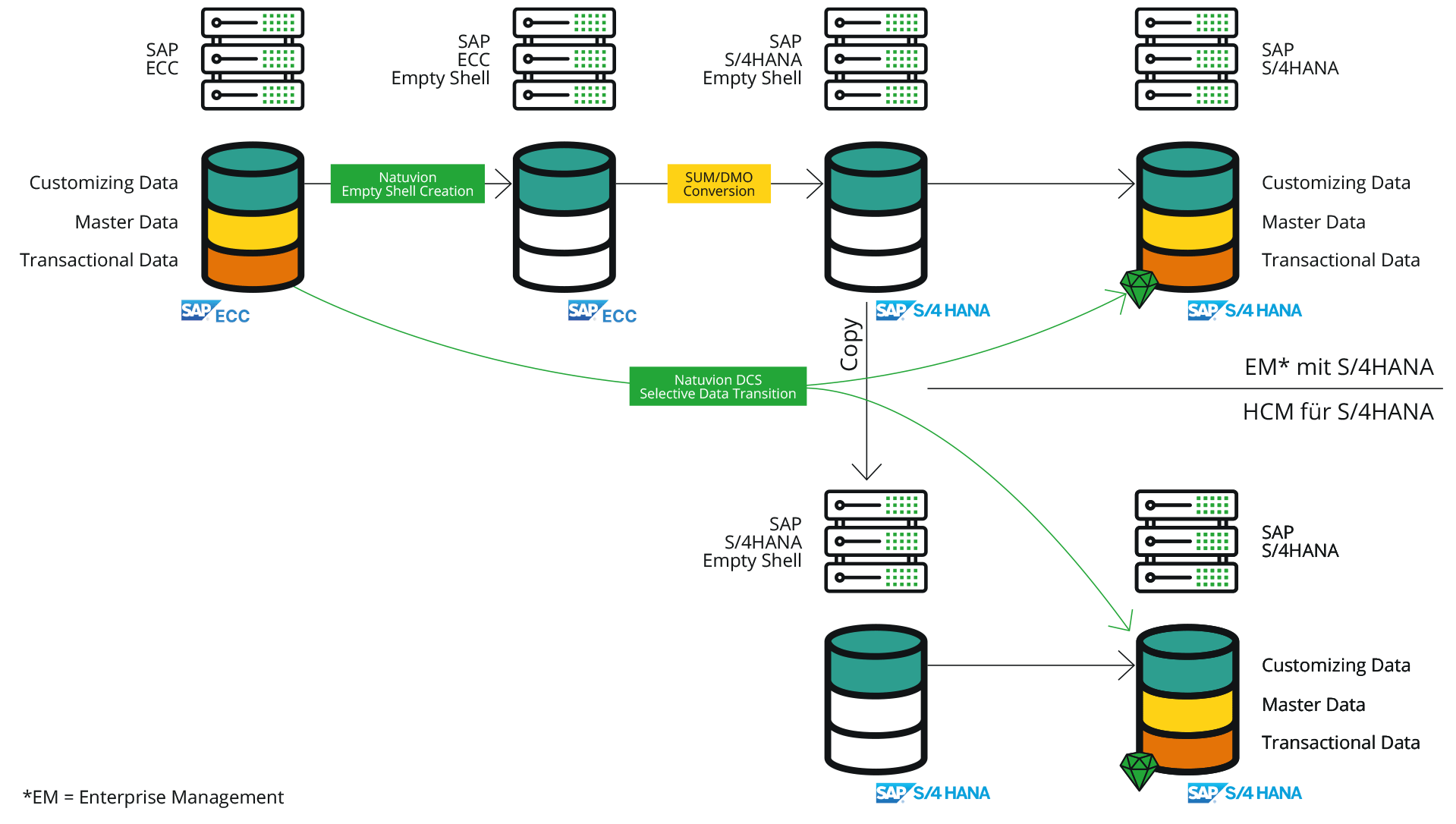
The main advantages of this approach are obvious:
The following diagram shows a concrete project example in which the IS-U industry solution remains in ECC.
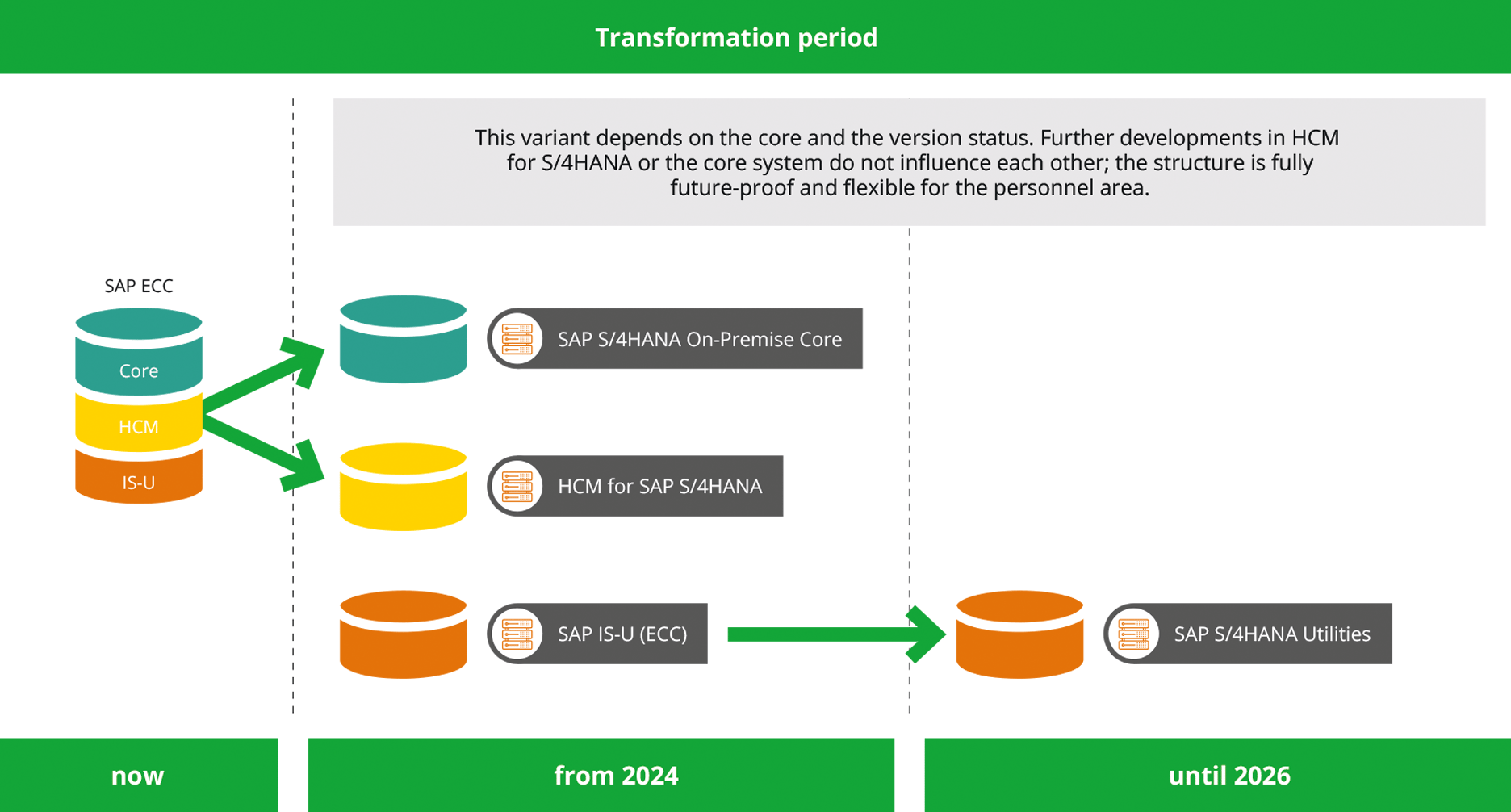
We can summarize by saying that the current availability of HCM for SAP S/4HANA opens up a range of possibilities for the further use and development of HCM functionalities and operating modes. We have also presented key scenarios for separate systems and options for integrated systems.
In order to determine the most suitable approach for a company and its objectives, it makes a lot of sense to determine this as part of a preliminary project. Natuvion also helps here with its own transformation tool. In this case, it is Natuvion SOPHIA which is used for analyzing customizations, data, interfaces, and applications. A basic procedure for such a preliminary project is the following Natuvion roadmap creation.
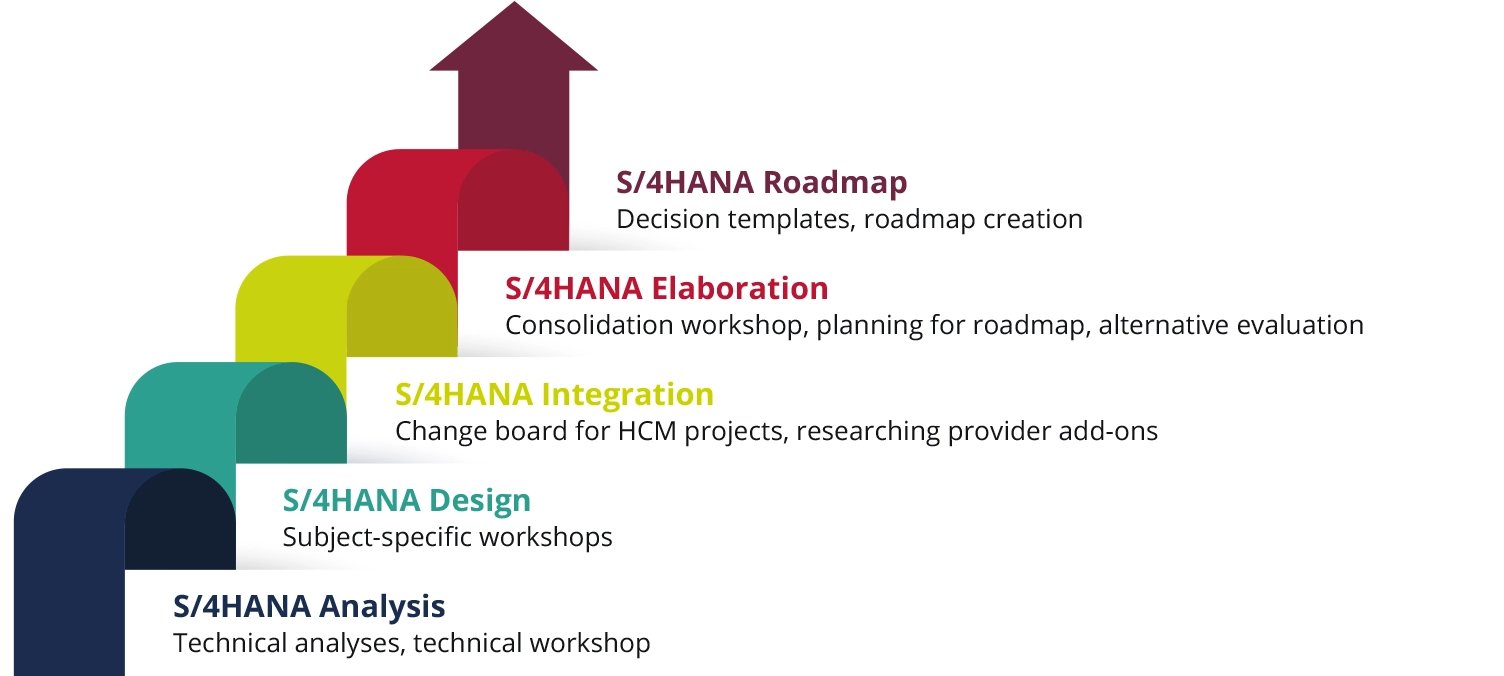
A final note relates to the topic of data scope in SAP S/4HANA. The key parameters here are the handling of personal data and the size of the data volumes from HANA DB.
A solution can be created for both issues via an SAP ILM implementation. The point at which this makes the most sense depends, among other things, on the transformation strategy. Natuvion can also provide effective support here.

The situation is all too familiar: IT systems grow and thrive, and users become hunters and gatherers of data. Sooner or later, you inevitably must...

In recent years, few topics have been discussed as intensely in the SAP industry press as the end of maintenance for SAP ERP 6. The industry press is...

Successful transformations require careful planning, accurate system insights, and a clear strategy. Companies should have a clear vision, choose the...